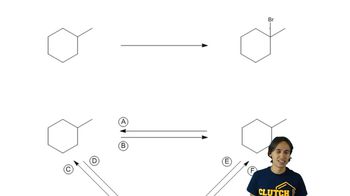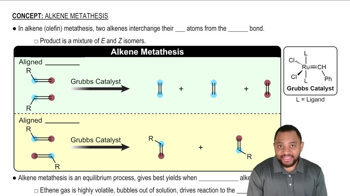Which has
i. the greater density: heptane or octane?
j. the higher boiling point: isopentyl alcohol or isopentylamine?
k. the higher boiling point: hexylamine or dipropylamine?
 Verified step by step guidance
Verified step by step guidance Verified video answer for a similar problem:
Verified video answer for a similar problem:



 3:08m
3:08mMaster How IMFs are related to melting and boiling points. with a bite sized video explanation from Johnny
Start learning